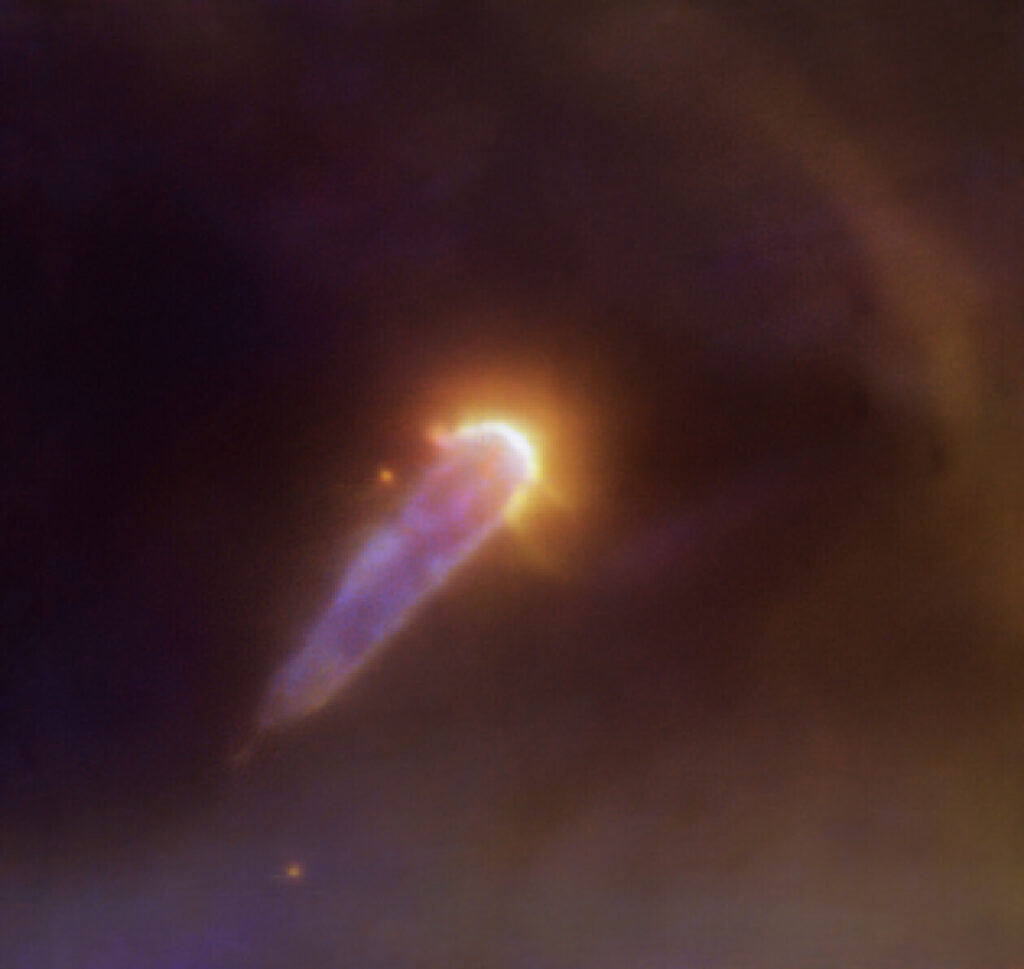The presented image may initially be confusing. Is it a comet? A meteor? A spacecraft? In fact, it’s a young star. But why does it have such an unusual shape?

Newborn stars are surrounded by gas-dust disks. Their substance serves as a building material for exoplanets. If there are other very bright and massive stars nearby with such newborn systems, their light heats the disks, depriving them of some of the material.
This is what happened to the star 177-341 W located in the Orion nebula. Exposure to radiation from another star (it is located outside the frame in the upper right corner) led to the formation of a characteristic bright structure in its protoplanetary disk, the shape of which resembles a bow. The tail stretching from the star to the lower left corner consists of carried-away material. Astronomers sometimes figuratively call such ionized protoplanetary disks bald spots.
The image of 177-341 W was taken using the MUSE multispectrometer mounted on a Very Large Telescope. The colors correspond to various chemical elements such as hydrogen, nitrogen, sulfur and oxygen.
But this is only a small part of the data collected by MUSE, which takes thousands of images at different wavelengths at the same time. This allows astronomers to study the physical properties of protoplanetary disks in great detail, including the amount of mass they lose. In this way, they will learn exactly how the process of formation of stars and planetary systems takes place.
Earlier we talked about how Christ the Redeemer put the moon on his shoulders.
According to ESO


